- Administrator
- Albums and Singles
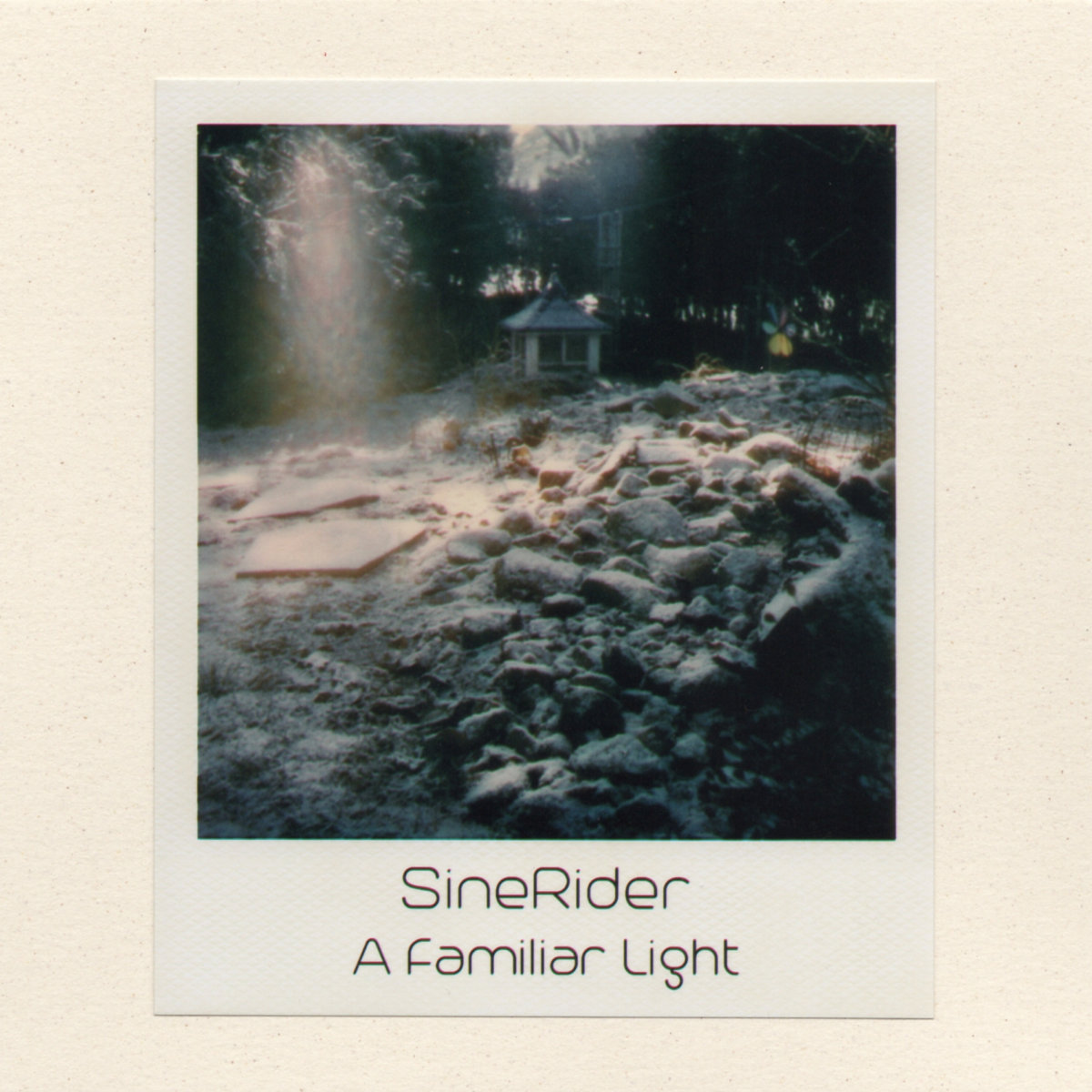
Sound In Silence is happy to announce the return of SineRider, presenting his new album A Familiar Light.
This is his second album on the label after the highly acclaimed Four Years Away in 2018.
SineRider is the solo project of Berklee College of Music composer Devin Powers, based in Norwood, Massachusetts. For over a decade, he has been producing his sublime music, ranging from ambient and electronica to shoegaze and post-rock, having many releases on labels such as Sun Sea Sky, Archives, Dronarivm and others, or self-released. He has also recorded instrumental music of a variety of genres like indie, slowcore, lo-fi, dubstep and 8-bit, under many different aliases such as Senseed, Bleepy Bloopy, Hooting Everywhere and Reanu Keeves, while he is also one half of the projects Lakewaves and Introspecter, along with Graham Marlowe and Brian Stegmann, respectively.
A Familiar Light, SineRider’s new full-length album, features eleven new compositions of ambient soundscapes, calming atmospheres and blissful melodies. Powers blends seamlessly soothing pad layers, warm synths, delicate piano melodies, dreamy chimes, hypnotizing drones and warped tape loops, to create A Familiar Light, a captivating album which appeals to all fans of ambient pioneers such as Brian Eno, Harold Budd and Steve Roach, and beatless Boards Of Canada and Helios.
More information can be found here.
Read More
- Anthony D'Amico
- Albums and Singles
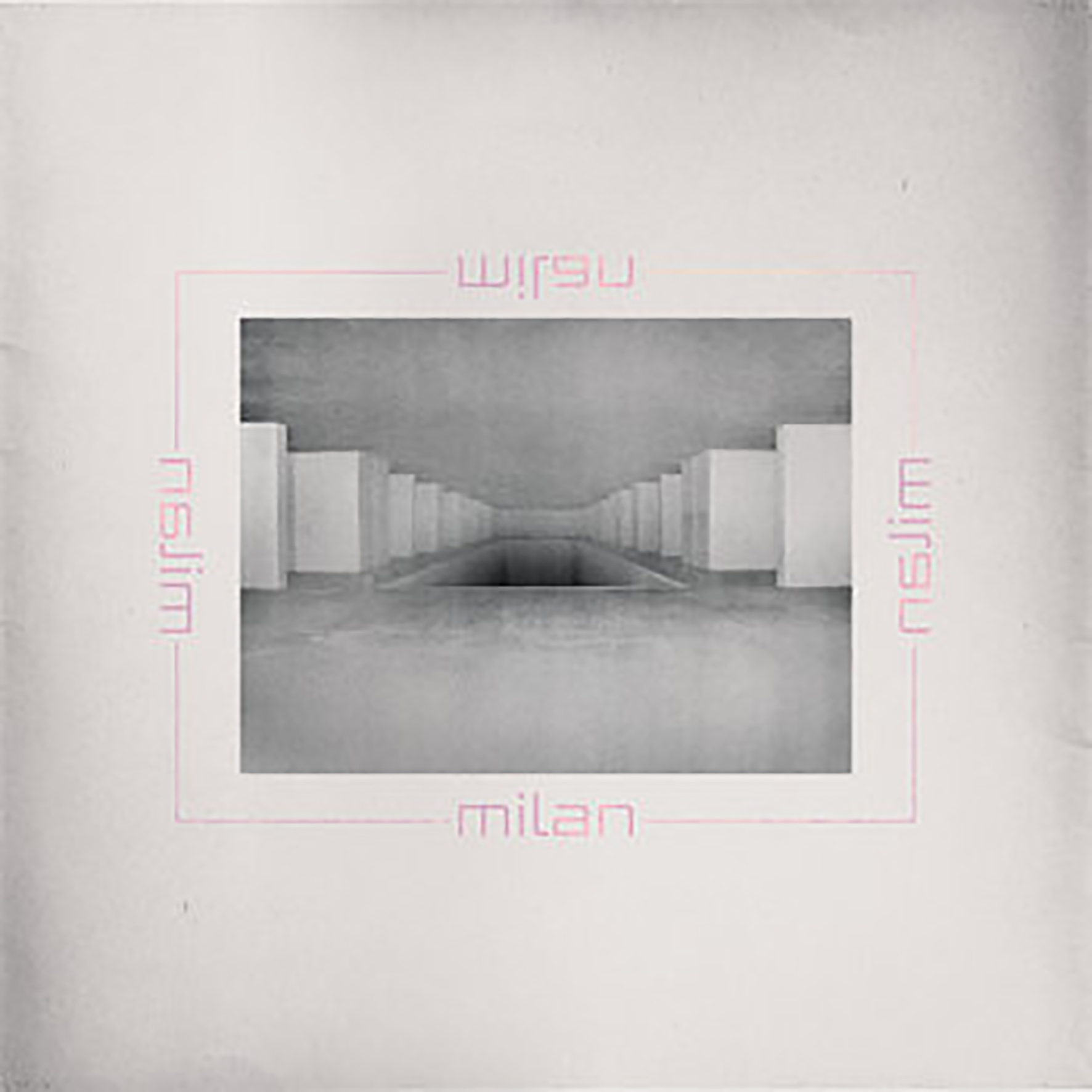
PLEASE DELETE. BELATEDLY DISCOVERED THAT DANGERBIRD IS AN RIAA LABEL.
 
Read More
- Anthony D'Amico
- Albums and Singles
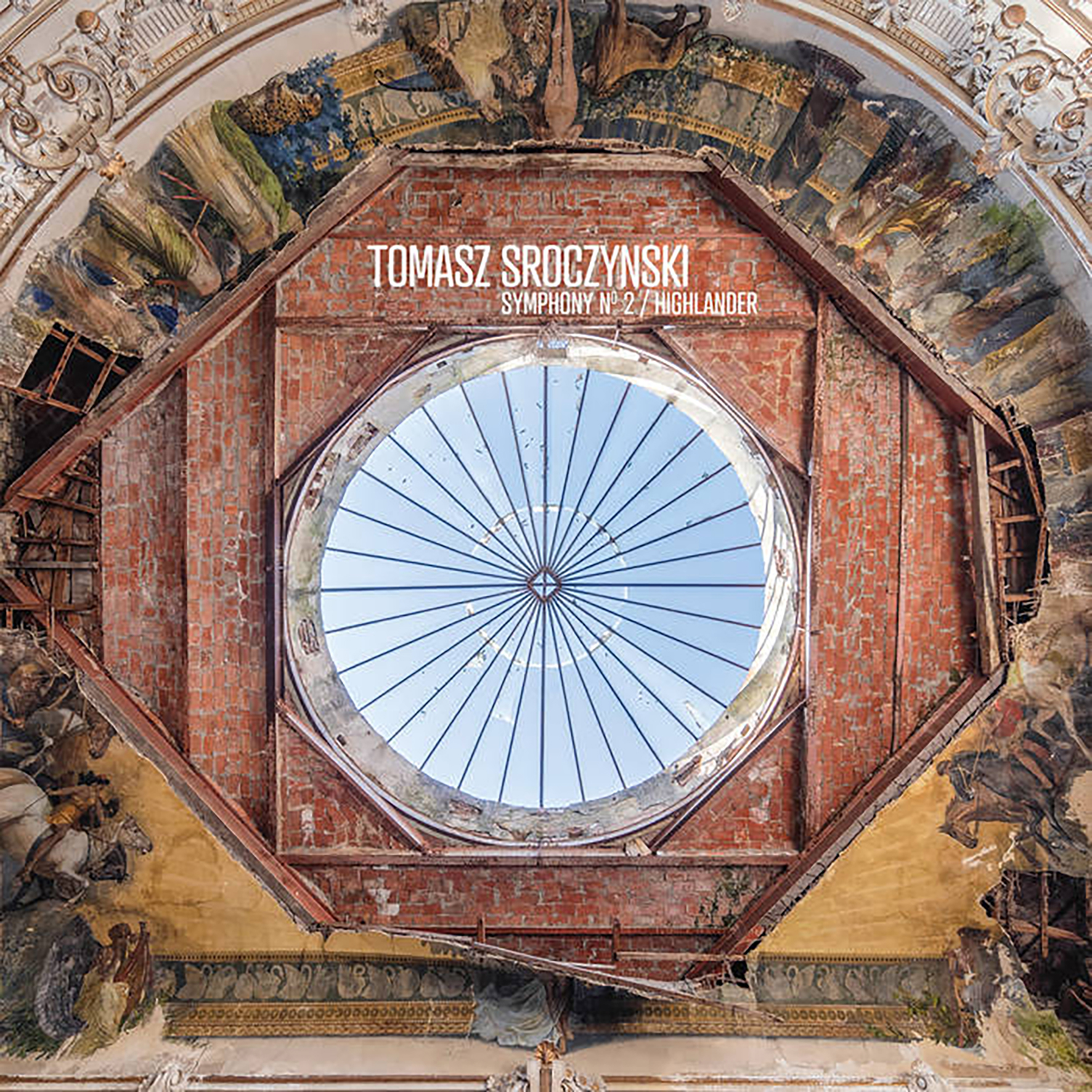 This album was my first exposure to this Polish composer, but this appears to be his sixth album if I include his improv trio and his collaborations. Also, it is the second symphony that he has composed (the first being 2017's Resurrection). Some of his past albums are a bit closer to my own weird/experimental sensibility (Primal and Ajulella, for example), but Symphony n°2 / Highlander is a more straightforward modern classical release and it is one hell of a great one. Or perhaps it would be more accurate to say that Highlander is composed of three very good pieces and one absolutely brilliant one. Naturally, that one absolutely brilliant piece ("Moderato Pastorale") is the best reason to seek this album out, but as the album description notes, "Tomasz Sroczynski is a symphony in his own right." Hyperbole aside, Sroczynski is indeed a genuinely fascinating composer, seamlessly combining influences as disparate as Arvo Pärt, experimental improv, and strains of both classic Detroit techno and contemporary German minimalist techno.
This album was my first exposure to this Polish composer, but this appears to be his sixth album if I include his improv trio and his collaborations. Also, it is the second symphony that he has composed (the first being 2017's Resurrection). Some of his past albums are a bit closer to my own weird/experimental sensibility (Primal and Ajulella, for example), but Symphony n°2 / Highlander is a more straightforward modern classical release and it is one hell of a great one. Or perhaps it would be more accurate to say that Highlander is composed of three very good pieces and one absolutely brilliant one. Naturally, that one absolutely brilliant piece ("Moderato Pastorale") is the best reason to seek this album out, but as the album description notes, "Tomasz Sroczynski is a symphony in his own right." Hyperbole aside, Sroczynski is indeed a genuinely fascinating composer, seamlessly combining influences as disparate as Arvo Pärt, experimental improv, and strains of both classic Detroit techno and contemporary German minimalist techno.
A sane and honest critical assessment of Sroczynski's second symphony could be easily distilled to some variation of "just go listen to 'Moderato Pastorale' immediately." As tempting as that is, it is a bit lean on the details and I would be remiss if I did not mention that Sroczynski's primary tools for this album were just a violin, a sampler, and a harmonizer and that Highlander is a triumph of masterful loop architecture rather than the work of a world-class string ensemble. I was surprised to learn that, as it is hard to imagine the churning, propulsive intensity of "Moderato Pastorale" originating from anything less than a dozen violinists relentlessly bowing away with demonic intensity. Regardless of how it was made, "Moderato Pastorale" is pitch-perfect in every sense, as Sroczynski unleashes a god-tier motif and then nimbly manipulates the tension for ten glorious minutes. I suspect this is where Sroczynski's love of techno manifests itself: he handles dynamic tension the same way a virtuosic DJ might seamlessly assemble and deconstruct a monster groove. Sadly, Sroczynski does not attempt to replicate that deft combination of raw emotion and steadily intensifying trancelike repetition again, but that is mostly because each of these four pieces explores a different shade of moody, epic grandeur. The following "Adagio," for example, gradually transforms from darkly brooding cloudlike swells into a rapturously swooning and heaving crescendo of Romanticism. Elsewhere, "Diablak" combines a chunky rhythm of strummed violin with a mournful, ambiguously exotic melody, but soon takes some strange detours before landing somewhere best described as "wrong-speed psychotic ballroom dance nightmare." The closing title piece then returns to more billowing and cloudlike territory, but does so in a compelling way, as its deceptively amorphous structure is like a living, organic entity that can solidify whenever the need for an emotional crescendo appears. The four pieces add up to an absorbing and dramatic whole, as Sroczynski is very skilled at moving between heaving immensity and emotionally raw snatches of melody. That said, you should probably just go listen to "Moderato Pastorale" immediately.
Samples can be found here.
Read More
- Anthony D'Amico
- Albums and Singles
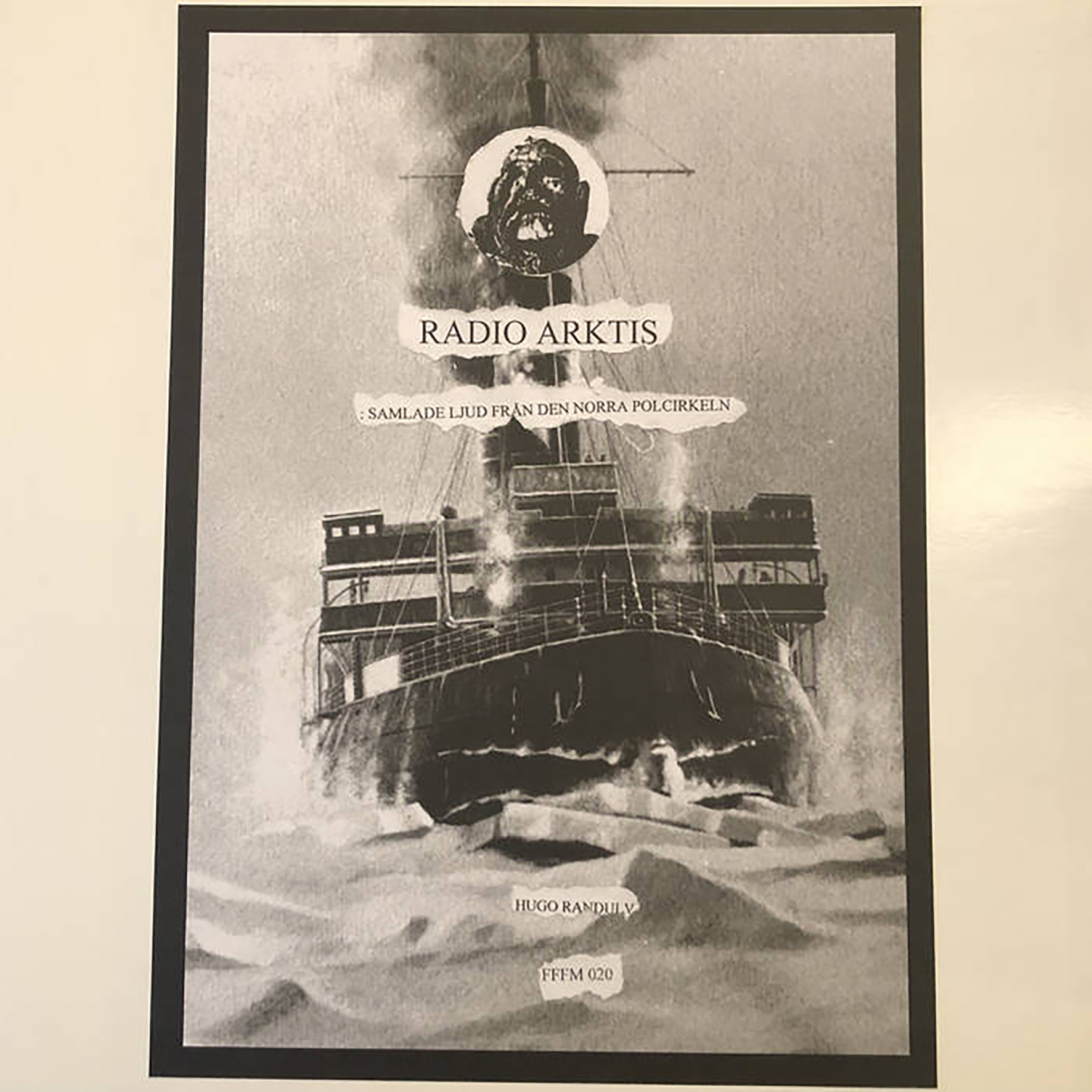 Bandcamp recently published a feature on one of my favorite subjects (the Gothenburg Underground) and it turned me onto this solo release from an artist they dubbed "the closest you'll get to a traditional musician in the Enhet För Fri Musik circle." That is no doubt accurate, as Randulv has been the guitarist in a couple of popular Swedish indie rock bands (Westkust and Makthaverskan) that bear zero resemblance to the outsider folk of Enhet För Fri Musik, but I am sure literally everyone in that collective has extracurricular interests that would surprise me (they are quite an interesting bunch, after all). In any case, the more ambient Radio Arktis is another outlier of sorts, though it is one still creatively indebted to the Gotherberg free music milieu. Randulv notes that the album was inspired by "a dream that one of us had, that we were going to make an imaginary soundtrack to every place on Earth." While the album's title ("Collected Sounds From The Arctic Circle") offers an explicit clue about the first place he chose to soundtrack, Randulv consciously opted for a more "beautiful and bright" aesthetic than I would normally associate with arctic-inspired ambiance. At its best, Radio Arktis carves out a beautiful and distinctive ambient/drone niche that gives Randulv's field recordings and more experimental tendencies fertile soil in which to subtly blossom.
Bandcamp recently published a feature on one of my favorite subjects (the Gothenburg Underground) and it turned me onto this solo release from an artist they dubbed "the closest you'll get to a traditional musician in the Enhet För Fri Musik circle." That is no doubt accurate, as Randulv has been the guitarist in a couple of popular Swedish indie rock bands (Westkust and Makthaverskan) that bear zero resemblance to the outsider folk of Enhet För Fri Musik, but I am sure literally everyone in that collective has extracurricular interests that would surprise me (they are quite an interesting bunch, after all). In any case, the more ambient Radio Arktis is another outlier of sorts, though it is one still creatively indebted to the Gotherberg free music milieu. Randulv notes that the album was inspired by "a dream that one of us had, that we were going to make an imaginary soundtrack to every place on Earth." While the album's title ("Collected Sounds From The Arctic Circle") offers an explicit clue about the first place he chose to soundtrack, Randulv consciously opted for a more "beautiful and bright" aesthetic than I would normally associate with arctic-inspired ambiance. At its best, Radio Arktis carves out a beautiful and distinctive ambient/drone niche that gives Randulv's field recordings and more experimental tendencies fertile soil in which to subtly blossom.
The album's three numbered pieces kick off in impressively strong fashion, as "1" is the piece that feels most like the heart of Radio Arktis. Fittingly, it is twice as long as the other two pieces and Randulv uses that extended duration to pass through several different stages. Initially, "1" is built upon little more than a slow-motion bass buzz, crashing waves, and plenty of tape hiss. That eventually blossoms into a reverie of blurred and shimmering synth-like melodies, but the terrain gets increasingly imaginative and inspired from that point onward, as it soon sounds like a Swedish lumberjack, a fireworks display, a extremely vocal flock of geese, and a melancholy young poet have turned up (as well as a probable cow). Those "non-musical" touches elevate the piece into something quite beautiful, as Randulv has a knack for artfully fading into the background to make something like a cacophony of squawking birds feel like the emotional core and focus. That "bird interlude" is the highlight of the album for me, as it feels like I am on a remote Nordic beach where the sun has just unexpectedly broken through a bank of clouds (exciting plenty of birds in the process). The second piece ("2") is a bit more melodic, as an oscillating shimmer slowly blooms into a dreamy, soft-focus loop of carousel/music box-like melody. It is wonderfully warm and sublime enough to be the album’s other major highlight, yet it too undergoes an interesting transformation. It evokes the feeling of being inside an enchanted snowglobe, then having the spell broken to reveal just battered old piano and a fitful wind-up music box in a sad, empty room. No such magic trick occurs in the final piece, lamentably, but "3" makes for a pleasantly radiant coda nonetheless. Sort of, at least: it feels like a New Age album was dubbed over a noise tape, but the latter remains simmering below the surface, threatening to break through. The noise never breaks though enough to make "3" as memorable as its predecessors, but such a cool climax likely would have ruined the spell of the album, so I must concede that Randulv’s artistic judgment is sound. In any case, I like this album a lot and excitedly look forward to Randulv's imaginary soundtracks for the rest of the globe.
Samples can be found here.
Read More
- Anthony D'Amico
- Albums and Singles
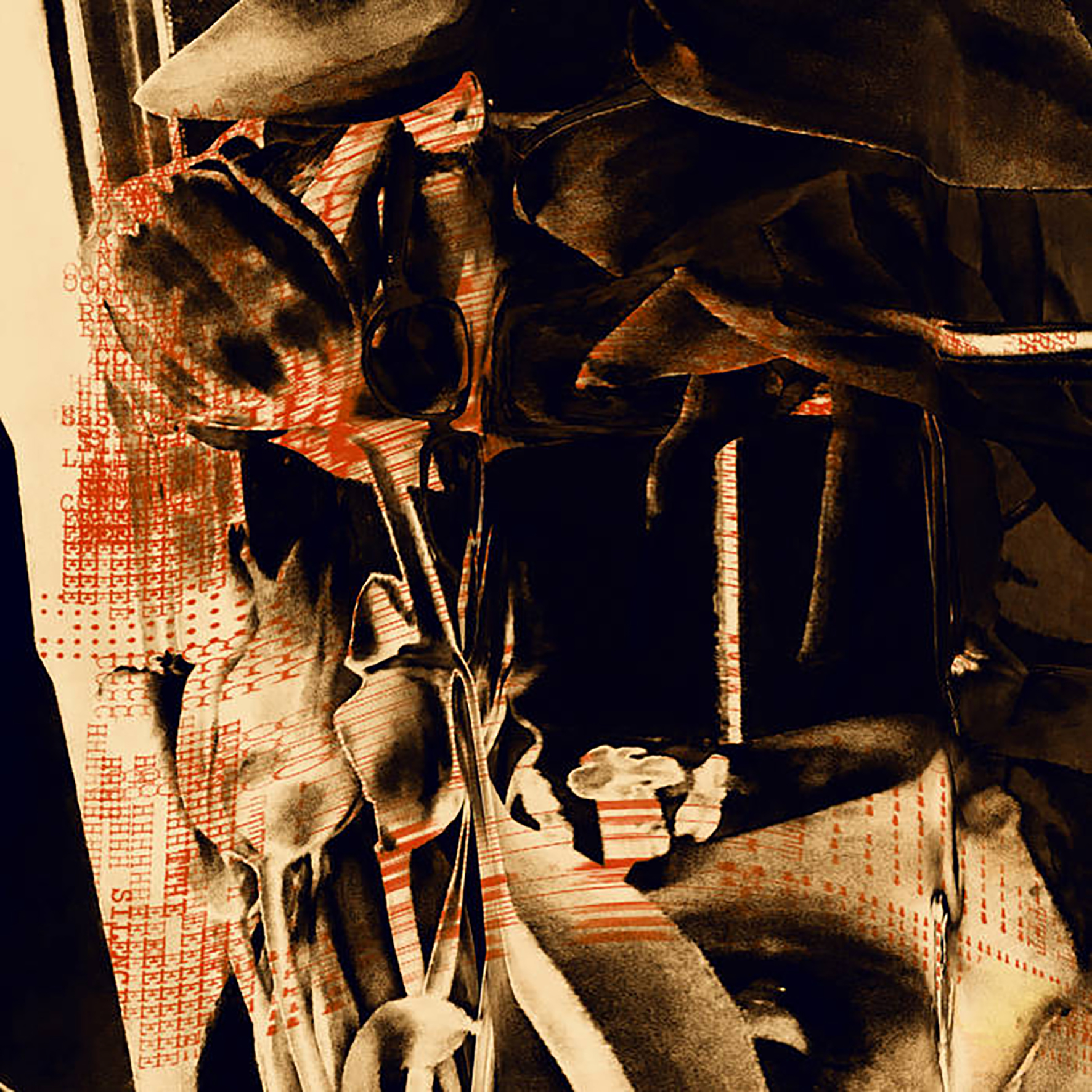 I believe this is the third album from this Vienna-based duo, but it has been a while (eight years) since they last released anything and they are entirely new to me. Rdeča Raketa is a collaboration between composer/double bassist Matija Schellander and Slovenian singer/artist/force of nature Maja Osojnik and they achieve quite a memorable and compelling collision of aesthetics. At its best, ...and cannot reach the silence feels like a Weimar-era cabaret, a killer noise/industrial show, and gripping performance art all beautifully mashed together. While that seems like an aesthetic that should not work (like Marlene Dietrich fronting Throbbing Gristle), the execution is so masterful that Schellander and Osojnik make that unholy union seem perfectly natural. Admittedly, the train occasionally derails a little bit or a song might take an exasperatingly long time to catch fire, but the album's minor flaws feel completely irrelevant when everything locks in place and Osojnik starts seductively singing and ranting like a classic femme fatale diva gone feral. Given that, Osojnik's magnetic vocal presence is understandably the focal point of the album, but it is also worth noting that the pair are unusually good at crafting wonderfully heavy and gnarled industrial rhythms. This is easily one of the year's most memorable albums.
I believe this is the third album from this Vienna-based duo, but it has been a while (eight years) since they last released anything and they are entirely new to me. Rdeča Raketa is a collaboration between composer/double bassist Matija Schellander and Slovenian singer/artist/force of nature Maja Osojnik and they achieve quite a memorable and compelling collision of aesthetics. At its best, ...and cannot reach the silence feels like a Weimar-era cabaret, a killer noise/industrial show, and gripping performance art all beautifully mashed together. While that seems like an aesthetic that should not work (like Marlene Dietrich fronting Throbbing Gristle), the execution is so masterful that Schellander and Osojnik make that unholy union seem perfectly natural. Admittedly, the train occasionally derails a little bit or a song might take an exasperatingly long time to catch fire, but the album's minor flaws feel completely irrelevant when everything locks in place and Osojnik starts seductively singing and ranting like a classic femme fatale diva gone feral. Given that, Osojnik's magnetic vocal presence is understandably the focal point of the album, but it is also worth noting that the pair are unusually good at crafting wonderfully heavy and gnarled industrial rhythms. This is easily one of the year's most memorable albums.
The album is composed of three lengthy pieces whose titles form a poem of sorts ("the night is spilling across the room…like gasoline. waiting it out."). All of the texts come from Osojnik, and the poem abstractly alludes to the album's central theme of rampant misunderstanding and the "tightening of incompatible parallel 'realities.'" I would be hard pressed to come up with a theme that better sums up the current state of the world than "incompatible parallel realities," but it would take a close reading of the lyrics to grasp that overarching theme, as ​.​.​.and cannot reach the silence primarily feels darkly libidinal with a healthy side helping of churning industrial menace. The strongest pieces are the first two, as they are more song-like than the closing soundscape. On "the night is spilling across the room," a ghostly haze of feedback gradually coheres into something like a Birchville Cat Motel gig unsuccessfully attempting to drown out a sultry cabaret chanteuse. As it unfolds, it hits quite a striking balance of eerie beauty, gnarled industrial maelstrom, and smoldering sexuality. It even stays great after Osojnik's fiery central performance subsides, as floating vocals swirl above a heavy industrial beat that feels like one of Downward Spiral-era NIN's more experimental moments. The following "like gasoline" picks up right where its predecessor left off, as a heaving mechanized rhythm is strafed by static and ghostly backing vocals fade in to set the stage for another volcanic Osojnik performance. There are a few moments that feel a bit too intense or bluntly sexual for my taste, but they are handily eclipsed by how much everything else is crushingly brilliant. It's like a great industrial noise band was unexpectedly blessed with a strikingly charismatic, sensual, and spontaneous femme fatale vocalist hellbent on tearing through the scene like an erotic hurricane. Consequently, it is fitting then that the final piece (“waiting it out”) is mostly a howling storm of noise and electronics. It is an impressively nightmarish one too, but the comparative lack of Osojnik's vocals makes it feel less "human" and distinctive than the previous pieces (though I do like the part where her garbled voice fleetingly appears to ask "who are these people?"). The three pieces cumulatively add up to quite a wild, wonderful, and uniquely heavy album, as Schellander and Osojnik seem blissfully immune to any impulses that might dilute or diminish the primal intensity of their art.
Samples can be found here.
Read More
- Anthony D'Amico
- Albums and Singles
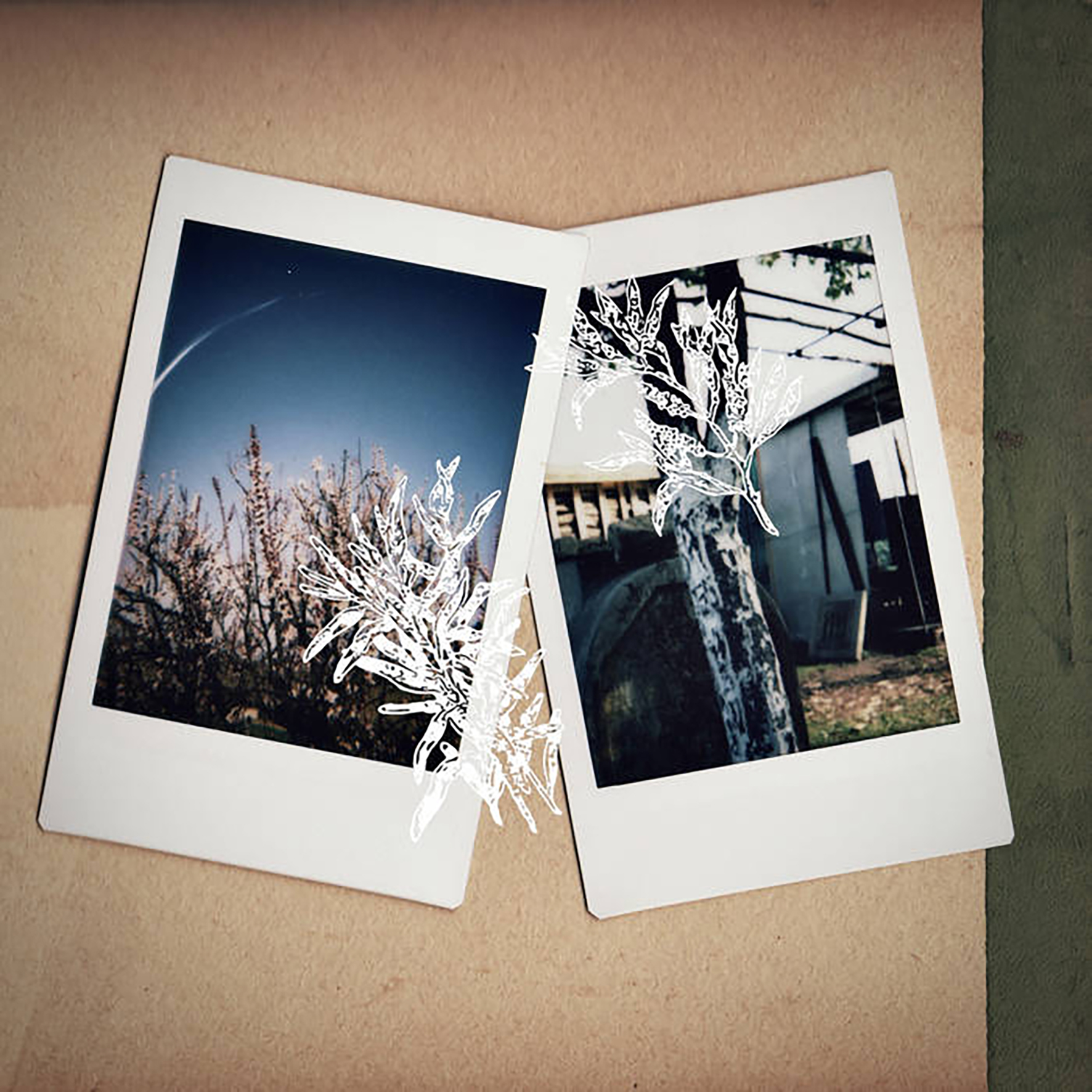 This prolific ambient project from Italian guitarist M. Beckmann has been a fascination of mine for a couple of years now and I have been patiently waiting for an appropriately excellent major new release to cover. This double album from June fits the bill quite nicely, though Beckmann has since released a trilogy of pieces entitled "Late Summer, Interior" that are similarly lovely. According to Beckmann, these four lengthy pieces are "a very condensed display" of how he is coping with the "pressure, stress, and fear around the corner" as "cities burst with life and everybody is eager to live a life that resembles normality." Stylistically, that coping manifests itself as a gorgeous strain of "rural ambient" akin to Benoit Pioulard's more bleary and blurred ambient work (Beckmann cites Boards of Canada as a big influence), but with some wonderful enhancements from field recordings and processed guitars. I am tempted to call it "shoegaze-damaged," but Beckmann generally achieves his sublime, flickering beauty without ever stomping a distortion pedal. I also dearly wish there was a more appropriate term for music in this vein than "ambient," as Beckmann’s strongest work brings a poetry and intimacy to the form that is every bit as transcendent as masters like Andrew Chalk.
This prolific ambient project from Italian guitarist M. Beckmann has been a fascination of mine for a couple of years now and I have been patiently waiting for an appropriately excellent major new release to cover. This double album from June fits the bill quite nicely, though Beckmann has since released a trilogy of pieces entitled "Late Summer, Interior" that are similarly lovely. According to Beckmann, these four lengthy pieces are "a very condensed display" of how he is coping with the "pressure, stress, and fear around the corner" as "cities burst with life and everybody is eager to live a life that resembles normality." Stylistically, that coping manifests itself as a gorgeous strain of "rural ambient" akin to Benoit Pioulard's more bleary and blurred ambient work (Beckmann cites Boards of Canada as a big influence), but with some wonderful enhancements from field recordings and processed guitars. I am tempted to call it "shoegaze-damaged," but Beckmann generally achieves his sublime, flickering beauty without ever stomping a distortion pedal. I also dearly wish there was a more appropriate term for music in this vein than "ambient," as Beckmann’s strongest work brings a poetry and intimacy to the form that is every bit as transcendent as masters like Andrew Chalk.
The opening "Far From The Crowds And The Pressures Of Time" is the first and best of Pastorage Sights' two half-hour-long epics. It begins somewhat modestly, as a hollowly echoing guitar motif languorously repeats over a hazy, shimmering bed of drones. As it unfolds, additional layers of melodies, textures, and effects sneakily accumulate until the piece becomes an achingly beautiful swirl of twinkling, swaying, and quivering interconnected loops. And from then on, it only continues to transform further, albeit without losing any of that essential character, as Beckmann subtly manipulates the focus with incredible patience and lightness of touch. Once it reaches critical mass, "Far From The Crowds" is an absolutely sublime tour de force of warmly flickering and hiss-soaked ambient drone bliss. In fact, one of my notes was "awesome in roughly five different ways by the time it ends." That makes it a tough act to follow, yet two of the remaining three pieces manage to scale similar heights, and the third is far from disappointing. The following "Leidenfrost Effect" features a similar slow-burning trajectory of steady loop accumulation, initially evoking flickering comets streaking across a lonely night sky before slowly expanding into a widescreen panorama of twinkling shoegaze bliss. It took me a bit longer to fully appreciate the 32-minute "Sparing Of Words And Stern In Her Ways," but that is simply because its pleasure are more nuanced. At one point, it feels like time slows and reality blurs while the hissing sounds of rain drift in from an open window, while another passage calls to mind a painterly sky of slow-moving bruised purple and pink clouds. And there is the final five or six minutes, which feel like angelic choral voices enveloped in subtly psychedelic guitar shimmer. The closing title piece is arguably the weakest of the four, but I might just feel that way because it lacks the shifting, enigmatic arc that makes the other three pieces such a pleasure. Instead, it is built around little more than a frayed and bittersweet slow-motion melody and a haze of ghostly EBow shimmer. As such, it shares some common ground with Celer (a cool loop hypnotically repeating into infinity), but that dreamy reverie is slowly eclipsed by a vibrant host of birds in its final moments. The sole caveat with this album is that it requires more patience than some other TVSF releases, as even the shortest piece hovers around 20 minutes, but the reward is usually proportional to how long Beckmann spends laying the groundwork. While I have no idea if Pastorage Sights is one of the strongest The Volume Settings Folder albums to date (there are currently 60+ releases on Bandcamp), it certainly feels enough like one to make it an excellent starting point for the curious.
Samples can be found here.
Read More
- Anthony D'Amico
- Albums and Singles
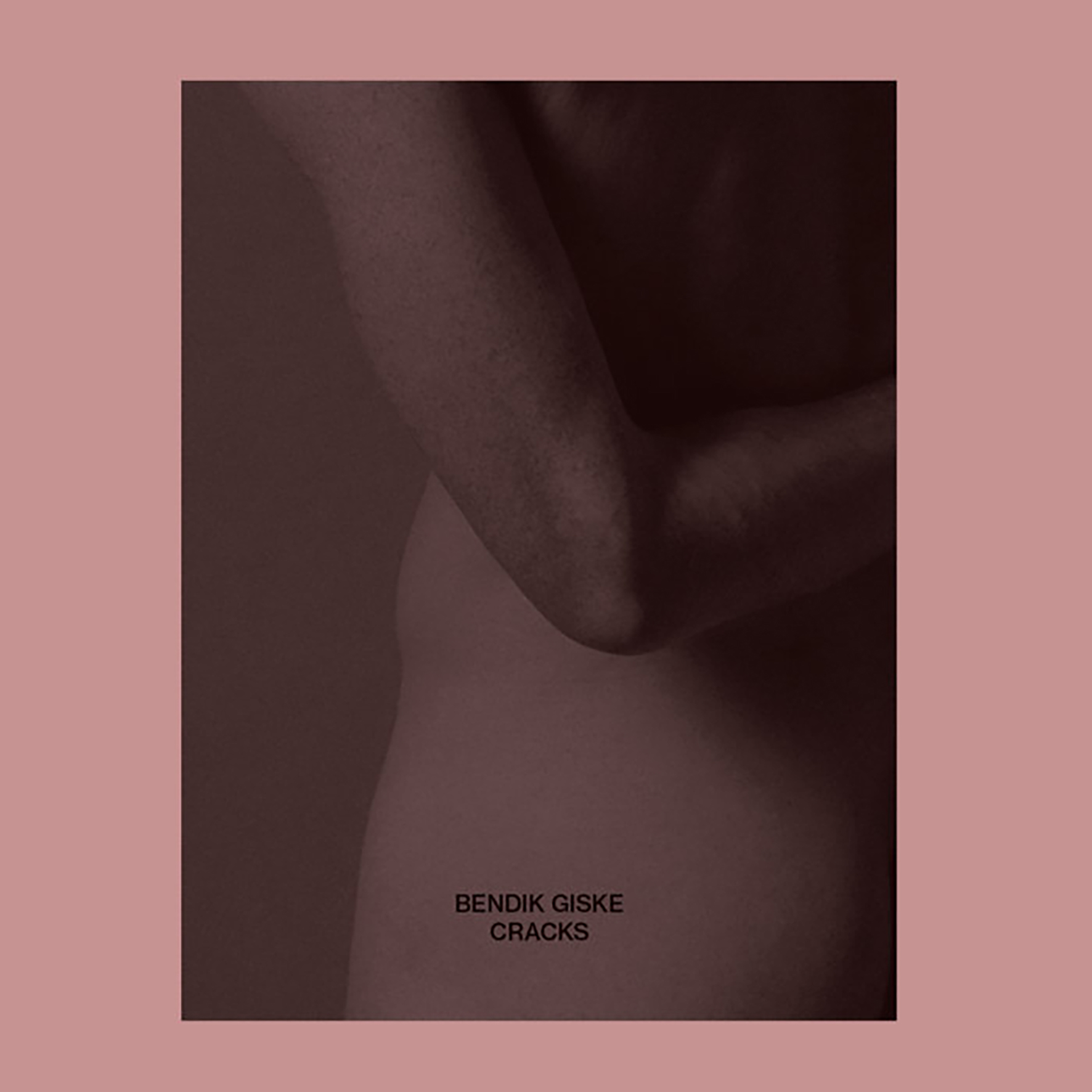 I have been quite keen to hear just about everything that this Norwegian saxophonist releases since he damn near stole the show on Caterina Barbieri’s Fantas Variations earlier this year. Thus far, I have yet to be disappointed and this latest solo release beautifully continues Giske's ascendance as one of the most compelling saxophonists on earth. When I first heard Cracks, it reminded me of Pauline Oliveros's hugely influential Deep Listening, as much of it feels like a killer sax solo reverberating around a vast subterranean space leaving dreamlike ghost trails in its wake. As it turns out, that is a masterful illusion, as Giske got to the same place in a very different way (and with very different conceptual inspirations). One of those inspirations was José Esteban Muñoz’s Cruising Utopia, which suggests that "queerness must strive towards futurity." A healthy portion of Cracks' futurity was provided by producer/collaborator André Bratten, as the album was recorded in "the new 'resonant' space of Bratten's reactive studio tuned to his original sounds." The album's description further notes that Cracks brings Giske "one step closer to the man-machine," but the beauty of the album for me lies in how effectively he combines intimate intensity with hypnotically repeating patterns.
I have been quite keen to hear just about everything that this Norwegian saxophonist releases since he damn near stole the show on Caterina Barbieri’s Fantas Variations earlier this year. Thus far, I have yet to be disappointed and this latest solo release beautifully continues Giske's ascendance as one of the most compelling saxophonists on earth. When I first heard Cracks, it reminded me of Pauline Oliveros's hugely influential Deep Listening, as much of it feels like a killer sax solo reverberating around a vast subterranean space leaving dreamlike ghost trails in its wake. As it turns out, that is a masterful illusion, as Giske got to the same place in a very different way (and with very different conceptual inspirations). One of those inspirations was José Esteban Muñoz’s Cruising Utopia, which suggests that "queerness must strive towards futurity." A healthy portion of Cracks' futurity was provided by producer/collaborator André Bratten, as the album was recorded in "the new 'resonant' space of Bratten's reactive studio tuned to his original sounds." The album's description further notes that Cracks brings Giske "one step closer to the man-machine," but the beauty of the album for me lies in how effectively he combines intimate intensity with hypnotically repeating patterns.
The opening "Flutter" is aptly named, as it begins with a breathy, fluttering pattern hovering at the edge of audibility. Gradually, a warbling and tender melody takes shape and the piece blossoms into something wonderfully broken and beautiful. "Flutter" is one of the most simmering and understated pieces on the album, as the central pattern feels like little more than breath and flapping keys, but most of the remaining pieces share a very similar structure. "Cruising" soon solidifies what that structure is: Giske unleashes winding, serpentine arpeggios akin to Phillip Glass-style minimalism, but with a twist: those arpeggios almost always spiral outward into something strangled, howling, or tenderly poignant (and sometimes all within the same piece). Bratten's hand plays a crucial role on "Cruising" as well, as the visceral intensity and gnarled textures that Giske wrests from his sax cut through a hallucinatory fog of long, lingering decays. It is quite an effective balance of sharp and soft textures, as the snarling central melodies stand out in stark relief while a deepening spell of unreality slowly intensifies in the background. The title piece is the sole divergence from that aesthetic, as the ghostly fog takes over completely for a long interlude of murky, billowing ambiance. The strongest piece on the album is "Void," which follows the expected arc of repeating arpeggios splintering into howls of anguish, but represents that arc in its most perfect form. Or maybe I just like the central melody more than usual. In either case, "Void" hits quite an effective balance of animal intensity, poignance, and flickering psychedelia. The closing "Matter (part 3)" is yet another strong variation on the album's "unraveling patterns" aesthetic, but it packs more of a throbbing, seething tension than the rest of the album. While I have not yet fully warmed to the title piece, Cracks is otherwise nothing but wall-to-wall greatness. I love the seemingly raw, intimate simplicity of these pieces, as Giske is an absolute genius at transforming a few arpeggios into something howling, unpredictable, and vibrantly alive.
Samples can be found here.
Read More
- Anthony D'Amico
- Albums and Singles
 Back in 2009, Duane Pitre curated a CD entitled The Harmonic Series that brought together an array of artists like Pauline Oliveros and Ellen Fullman for a collection of pieces composed for Just Intonation. Roughly a decade later, Pitre has returned with a considerably more ambitious second volume that enlists "six of the most important emerging voices of contemporary experimental music" for a triple LP extravaganza of longform Just Intonation pieces. To his credit, Pitre truly did assemble an impressive lineup for this release, as artists like Caterina Barbieri and Kali Malone are undeniably leading lights of the current vanguard. In fact, everybody here has a history of making great or provocative music, though I am not sure everyone was brimming with great ideas for a bombshell Just Intonation opus, as it seems like a daunting challenge for anyone attempting melodies. Given that, The Harmonic Series II is more of a fascinating mixed bag than a uniform triumph, though roughly half the artists managed to conjure up something that exceeded my expectations. And regardless of how well some pieces do or do not work, this collection has definitely expanded my idea of what is possible with Just Intonation.
Back in 2009, Duane Pitre curated a CD entitled The Harmonic Series that brought together an array of artists like Pauline Oliveros and Ellen Fullman for a collection of pieces composed for Just Intonation. Roughly a decade later, Pitre has returned with a considerably more ambitious second volume that enlists "six of the most important emerging voices of contemporary experimental music" for a triple LP extravaganza of longform Just Intonation pieces. To his credit, Pitre truly did assemble an impressive lineup for this release, as artists like Caterina Barbieri and Kali Malone are undeniably leading lights of the current vanguard. In fact, everybody here has a history of making great or provocative music, though I am not sure everyone was brimming with great ideas for a bombshell Just Intonation opus, as it seems like a daunting challenge for anyone attempting melodies. Given that, The Harmonic Series II is more of a fascinating mixed bag than a uniform triumph, though roughly half the artists managed to conjure up something that exceeded my expectations. And regardless of how well some pieces do or do not work, this collection has definitely expanded my idea of what is possible with Just Intonation.
Each of the six artists was given a full side of vinyl to work with, so each composition is roughly between 15-20 minutes long. The first side is devoted to Kali Malone's modest "Pipe Inversions," a duet between Malone (playing a "small pipe organ") and Isak Hedtjärn on bass clarinet. I was expecting Malone to contribute an album highlight, given how much thought went into the harmonies and frequencies of The Sacrificial Code, but "Pipe Inversions" is mostly just a slowly shifting series of chords with bleary harmonies centered around a more sonorous root. As such, its pleasures are more structural and subtly microtonal than some of the other pieces. Conversely, I was not sure how well Caterina Barbieri's strong melodic sensibility would handle this tuning challenge, but her closing "Firmamento" is one of the collection's strongest and most surprising pieces. Admittedly, Barbieri's melodicism did not come along for this trip, but her tense, neon-lit futurism did, as "Firmamento" is an enjoyably spacey and slow-burning drone epic. My favorite piece is Duane Pitre's own "Three for Rhodes," which combines an erratically heaving, herky-jerky pulse with a shimmering crystalline edge. I was also pleasantly surprised by Catherine Lamb's "Intersum," which goes against the grain to reduce Just Intonation harmonies to something akin to a ghostly supernatural fog drifting through a crackling and hissing backdrop of field recordings. The collection is rounded out by the gnarly, nightmarish strings and buzzing horror of Tashi Wada's "Midheaven (Alignment Mix)" and Byron Westbrook's kosmiche-sounding reverie of stammering, sweeping arpeggios ("Memory Phasings"). Aside from Barbieri's piece, which has a definite dynamic arc, the general theme of the album is extending a single interesting motif for the entire duration of a piece (albeit with plenty of small-scale dynamic and harmonic transformations along the way). As a result, how much I enjoy a piece within its first minute is generally a solid indicator of what I will think by the end. However, what I actually hear is just the tip of an iceberg of deeper compositional and conceptual themes, so listeners who are more invested in the details and mechanics of avant-garde composition will likely enjoy The Harmonic Series II on a deeper level than me. In any case, this is definitely an interesting and one-of-a-kind release. While some pieces are more instantly gratifying than others, each of the six artists involved found their own unique and inventive way to face the challenge and expand Just Intonation's historically constrained stylistic niche.
Samples:
- Kali Malone, "Pipe Inversions"
- Duane Pitre, "Three for Rhodes"
- Tashi Wada, "Midheaven (Alignment Mix)"
 
Read More
- Administrator
- Albums and Singles
 This five-CD boxed set ambitiously compiles all three of Davachi's interrelated 2020 albums released on her own Late Music imprint. Given that Figures in Open Air alone features two pieces that clock in around an hour each, this collection presents an absolutely overwhelming amount of similar-sounding material. That said, Cantus, Descant seems to be one of Davachi's more beloved releases among fans despite its unswerving devotion to pipe organ-centered minimalism. That makes this collection an inspired idea, as it presents that constrained vision in three differing stages: its "more raw and improvisational" beginnings (Laurus), the polished and meticulously crafted studio album, and some great live performances from the period when this era was taking shape. Each of the three albums features some sublime highlights, which will likely inspire me to curate my own condensed version. That distillation will give me the sustained and focused beauty that I want from a Sarah Davachi album, but Cantus Figures Laurus can also provide a calming five-hour respite in a cathedral of drones. It is not unlike a portable version of La Monte Young's Dream House, if he were into church music instead of psychotropic Just Intonation harmonies. Hell, it can even be an interactive one, as listeners can enhance their experience with their own Marian Zazeela-inspired light shows.
This five-CD boxed set ambitiously compiles all three of Davachi's interrelated 2020 albums released on her own Late Music imprint. Given that Figures in Open Air alone features two pieces that clock in around an hour each, this collection presents an absolutely overwhelming amount of similar-sounding material. That said, Cantus, Descant seems to be one of Davachi's more beloved releases among fans despite its unswerving devotion to pipe organ-centered minimalism. That makes this collection an inspired idea, as it presents that constrained vision in three differing stages: its "more raw and improvisational" beginnings (Laurus), the polished and meticulously crafted studio album, and some great live performances from the period when this era was taking shape. Each of the three albums features some sublime highlights, which will likely inspire me to curate my own condensed version. That distillation will give me the sustained and focused beauty that I want from a Sarah Davachi album, but Cantus Figures Laurus can also provide a calming five-hour respite in a cathedral of drones. It is not unlike a portable version of La Monte Young's Dream House, if he were into church music instead of psychotropic Just Intonation harmonies. Hell, it can even be an interactive one, as listeners can enhance their experience with their own Marian Zazeela-inspired light shows.
The heart of this collection is, of course, Cantus, Descant, which was both the inaugural release for Davachi's Late Music imprint and the culmination of her recent fascination with sacred music and antique church organs. Two organs in particular play a central role: a Van Straten pipe organ from 1479 located at Amsterdam's Orgelpark and a Story & Clark reed organ (1890s) situated in LA's wonderful Museum of Jurassic Technology. Several other antique pipe organs turn up as well, but the Van Staten stands out as unique for reasons beyond its advanced age, as it was tuned to a "sixteenth century meantone temperament" and required the presence of a second person (Hans Fidom) to operate the bellows. The Van Straten compositions form a kind of mini album of their own, as that organ was used for the five numbered "Stations" pieces. Stylistically, however, the "Stations" cycle is fairly representative of the album’s overall aesthetic, which has a feel of floating, dreamlike suspension. The liner notes provide plenty of interesting information about the inspirations and conceptual themes of the album, but the central idea of the album lies in the title: Davachi was primarily interested in the interplay between "cantus" (either unadorned singing or the sometimes improvisatory high voice in a polyphony) and "descant" (the larger structure). Davachi expanded that into approaching the album as a dialogue between the individual and "the larger time and space" that they occupy. In more practical terms, that guiding duality manifests itself in a series of slow-motion, droning reveries that gradually and subtly blossom into something more.
My favorite piece is the one that Davachi notes is most dear to her: the closing "Diaphonia Basilica."It is a not a particularly radical departure from the rest of the pieces, but it is nevertheless a perfect distillation of its many themes, as it unfolds like a gorgeously shimmering and oscillating organ mass in slow motion.Most of the album's other highlights are more subtle though, like the bleary, darkly psychedelic harmonies of "Ruminant" or the slow, warm drones of "Still Lives."There is an excellent three-song run near the end of the album ("Stations I," "Gold Upon White," and "Oldgrowth") in a roughly similar vein, but the bigger story is the inclusion of two actual songs with vocals.The first, "Play the Ghost," approximates The Court of The Crimson King if it was reimagined by Liz Harris wielding a Mellotron."Canyon Walls" features similarly hushed, spectral, and melancholy vocals, but feels more like a worn cassette of a proggy Angelo Badalementi/Julee Cruise demo that did not quite fit the Twin Peaks vibe.The understated, vaporous vocals give those two pieces a haunted, fragile atmosphere that almost blurs them into "ambient" territory, but they are a promising glimpse of where Davachi's muse may lead on future albums.I suspect a Mellotron-centric prog epic has been slowly gestating in her head for years and will likely be her destiny/culminating achievement.
The collection is rounded out by Figures in Open Air (originally a double CD) and Laurus (originally a cassette).Davachi describes Figures as "a supplement" to Cantus, Descant, as it compiles several related live performances, alternate versions, and demos.For me, the centerpiece is a complete hour-long Chicago performance that beautifully expands upon three of the strongest pieces from Cantus, Descant ("Oldgrowth," "Gold Upon White," "Diaphonia Basilica") with some help from a pair of French horn players.In fact, "Live in Chicago" would probably be one of Davachi's best albums if it had been released by itself.The other two hours are solid, but I especially loved the poignant and sublime excerpt from a 2018 electronic set at The Lab in San Francisco recorded shortly after the passing of beloved filmmaker/Davachi-collaborator Paul Clipson.For those ambitious enough to plunge into this entire boxed set as a sustained, immersive experience, Figures in Open Air will likely be the emotional climax of the collection.It is probably the most uniformly strong of the three albums as well, which is no small claim coming from someone as live album-averse as me.Given that, Laurus acts as a bit of a comedown rather than a continuation of that arc.Davachi intended that tape as "a footnote," as it collects the early improvisations that eventually blossomed into Cantus.Given that, it is the least substantial of the set's three releases, but it offers some pleasures beyond merely illuminating Davachi’s creative process, as it is more overtly melodic than the later stages.The best pieces are the first two parts of "Laurus" (somewhat linked to Cantus's "Ruminant") and the darkly psychedelic pipe organ drones of "Herber Well."While I definitely did not expect Cantus, Descant to ever be an album destined for the full Bitches Brew treatment, I can certainly understand Davachi’s reasoning, as the supplemental material (especially Figures) is unusually strong.If an artist ever finds themselves with enough solid, thematically unified material for a durational epic and an audience eager to hear it, they would be a fool not to grab that opportunity with both hands and run with it.
Samples can be found here.
Read More
- Duncan Edwards
- Albums and Singles
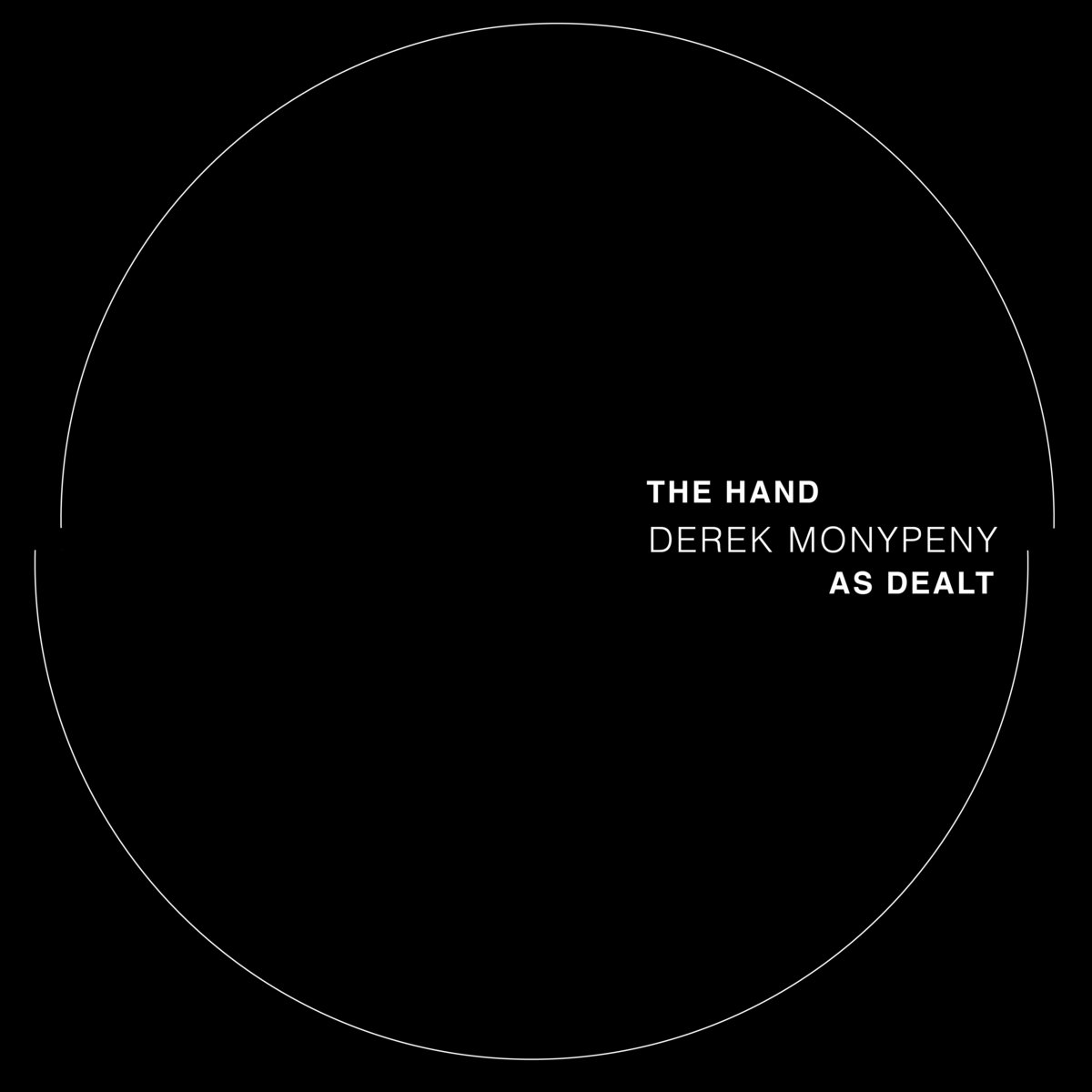 Titled after a phrase in Richard Meltzer's writings to do with an eternal sense of perseverance through sound,The Hand As Dealt is dedicated to Terry Riley, Don Cherry, Alice Coltrane, and Egyptian singer Umm Khoultoum (lesser known in the West, but the incomparable and legendary "Orient Star” and “The Fourth Pyramid” in the East). Inspired by the notion that through profound adversity there is a higher reason to play, inherent in the sound itself, Derek Monypeny plays this hand, simply and brilliantly. With his guitar tuned to DADGAD, and an indian instrument called the shahi baaja tuned somewhere in the region of D major, he also, in terms of equipment and technique, pays mind to a path trod by Riley, Reich, Oliveros, Fripp, and Eno.
Titled after a phrase in Richard Meltzer's writings to do with an eternal sense of perseverance through sound,The Hand As Dealt is dedicated to Terry Riley, Don Cherry, Alice Coltrane, and Egyptian singer Umm Khoultoum (lesser known in the West, but the incomparable and legendary "Orient Star” and “The Fourth Pyramid” in the East). Inspired by the notion that through profound adversity there is a higher reason to play, inherent in the sound itself, Derek Monypeny plays this hand, simply and brilliantly. With his guitar tuned to DADGAD, and an indian instrument called the shahi baaja tuned somewhere in the region of D major, he also, in terms of equipment and technique, pays mind to a path trod by Riley, Reich, Oliveros, Fripp, and Eno.
This album has a clear flow, running East to West and back again, at times fierce and frantic, at others, gentle, stretched out, and unhurried. By some standards, most of these pieces are very long, but time is relative and cultural. For instance, it was not unusual for Umm Kulthum to perform three songs over two hours. The music retains a raw magic, even as Monypeny uses a lot of e-bow and a myriad of different effect pedals. For example, a key song "South Van Ness Vickie” is gentle and cosmic: as a loop of a little guitar figure runs throughout the song, and he improvises over that using a Mellotron simulator pedal (the EHX Mel9), a time lag accumulator*, amp reverb, and e-bow. The combination sparkles with a spontaneous, almost-sensuous quality. His use of the shahi baaja is not the superficial embrace of a traditionally Eastern instrument, as attempted by countless groups whipping out a sitar in the name of psychedelia. If anything, on The Hand As Dealt the differences between the (Western) guitar and (Eastern) shahi baaji are more or less erased, bringing them closer together.
 
 
This music itself is ample reward, but I also learned of Umm Kulthum, and of my ignorance about effects pedals and in particular how well-named they can be. For drones, Monypeny uses the EHX Superego pedal, and for the frantic, alarming, hypnotic (to Western ears) screech needed throughout "Tamarisk" he has the Moogerfooger Cluster Flux. There has even been a pedal named The 4’33", with one button to silence all inputs for exactly that length of time, "released" one April Fools Day. The Hand As Dealt also relies on loopers and phasers, the aforementioned e-bow, and post-production space-echo added to the shahi baaja on "(You Are Just) Playing In The Entranceway" and a lot of restraint and skill has been applied to keep the album both exciting and subtle. Monypeny’s playing is well-informed by his travels and knowledge of other "desert guitarists", and he is aided by both Mark Gergis who mastered the first two sides and Charlie Stavish, who recorded the last two sides at his Clock Tower Recorder.
It is a record to stick on and listen from start to finish, with some challenging sections amid plenty of beauty. I have also returned to just the title track, which shimmers for ages like heat reflections on an archetypal desert, where power lines are humming as eerie or forlorn as if someone found The Wichita Lineman dead on the wires before he could send that message about needing and wanting for all time. The mellotron simulator pedal is used again here, before the Moogerefooger Cluster Flux returns for the swirling sound storm that is the noisier final quarter (of an 18 minute track). I like the timelessness and non-dualistic power of the whole album, a power which makes very apt the dedication to Umm Khoultoum - and her orchestra. Her voice, as a 12 year old, was so powerful that her father dressed her as a boy. At age 70 she still stood three or four feet from the microphone when singing.
Naturally, I got on the scent of this "hand as dealt" business, and read Richard Meltzer's Autumn Rhythm. In this suitably full-throttle rant about getting old and dying, Meltzer says he would reject the hypothetical chance to go back to a youthful hotter, cooler, dumber, state: "if innocence, or non-belief, emotional benightedness, whatever, be the key ingredient in getting off on a full range of hands-as-dealt, well, that's completely, totally objectionable." In bigger picture terms, he compares the dreaded Orwellian 1984, with what happened, the "something far more weasely and malevolent" which we were dealt. "Big Mean Uncle certainly did watch you", he argues, "but more than that you were watching him (his 8-ring circuses, his news and commercials, his Master Program), addictedly, on a monitor YOU paid for. (More effective and cost-effective.) And the year itself, diggit: Reagan had to be Prez; the Olympics had to be staged in L.A. (Vegas wasn't ready yet). There was no irony left in the world." I might add that we're still dealing with that hand. At one point Meltzer bemoans being forced to switch from writing on a typewriter to a computer. I read that around the same time as discovering that the shahi baaja is a sort of electric zither to which typewriter keys have been added. Meltzer also describes how he always removes worms from roads and pavements, away from the danger of being stepped on or baked by the sun, to safe havens of dirt, grass, or an oasis of wet newspaper. "For as long as I can remember I've done this, and I'm confident I always will." Equally,The Hand As Dealt makes sense of it's own existence: it is out there in the desert with it's feet up, going with the flow, playing along with sounds drifting in from the past and across the starry night from distant eternal campfires where Group Doueh are plucking strings and Mr. Zoot Horn Rollo is hitting that long lunar note and letting it float.
Anyone with a mind to let their wallets flop out or to open their purses can grab the limited bonus 7-inch single of Sun City Girls songs, (Vinegar Stroke/My Painted Tomb) played on the shahi baaja, available with the album. The single raises money for the Palestinian Children's Relief Fund. Derek Monypeny has since released Unjust Intonation, consisting of 4 short sections of guitar playing run through a digital time-stretching effect, pulling the sections into a variety of long-duration forms.
*The Time Lag Accumulator was pioneered in 1963 for Terry Riley’s Music For The Gift.
 
 
Read More
- Anthony D'Amico
- Albums and Singles
 Metropolis Records continues their ambitious LPD reissue campaign with an expanded and remastered edition of this oft-fascinating album from the band's celebrated mid-'80s hot streak. According to the band, Island of Jewels was "the natural successor" to The Tower, but it was chronologically sandwiched between two of the Dots' most beloved albums from the era (1985's Asylum and 1988's Any Day Now). Being eclipsed on either side by arguably superior albums has not been optimal for Island of Jewels' stature within the LPD canon, yet it still captured the band in legitimately inspired form (albeit in service of an especially bleak vision this time around). As I did not start delving into the Dots' oeuvre until the mid-'90s (I was lured in by The Tear Garden), I still find it a bit difficult to embrace some of the conspicuously "'80s" elements from this particular phase, as the synth sounds and slap/fretless bass themes have not aged terribly well. Then again, it seems deeply wrong-headed to take issue with the tools that the band used to craft such a playfully surreal and endearing collection of songs, as only a fool would let passing stylistic trends rob them of their sense of wonder. While I would describe Island of Jewels as a more of an acquired taste than some of the surrounding releases, it is a taste worth acquiring, as this album is a delightfully hook-filled and hallucinatory world to immerse oneself in.
Metropolis Records continues their ambitious LPD reissue campaign with an expanded and remastered edition of this oft-fascinating album from the band's celebrated mid-'80s hot streak. According to the band, Island of Jewels was "the natural successor" to The Tower, but it was chronologically sandwiched between two of the Dots' most beloved albums from the era (1985's Asylum and 1988's Any Day Now). Being eclipsed on either side by arguably superior albums has not been optimal for Island of Jewels' stature within the LPD canon, yet it still captured the band in legitimately inspired form (albeit in service of an especially bleak vision this time around). As I did not start delving into the Dots' oeuvre until the mid-'90s (I was lured in by The Tear Garden), I still find it a bit difficult to embrace some of the conspicuously "'80s" elements from this particular phase, as the synth sounds and slap/fretless bass themes have not aged terribly well. Then again, it seems deeply wrong-headed to take issue with the tools that the band used to craft such a playfully surreal and endearing collection of songs, as only a fool would let passing stylistic trends rob them of their sense of wonder. While I would describe Island of Jewels as a more of an acquired taste than some of the surrounding releases, it is a taste worth acquiring, as this album is a delightfully hook-filled and hallucinatory world to immerse oneself in.
Belatedly delving into '80s-era Legendary Pink Dots is a curious experience, as albums like this one capture an incredibly imaginative and talented group of musicians still somewhat in the thrall of their influences and the popular instrumentation of the time. As a result, a lot of this album sounds like someone from the Victorian era became obsessed with '70s prog and set out to make a half-carnivalesque/half-melancholy concept album armed with a fretless bass and an inexpensive synthesizer. Given that singular vibe, even the weakest songs are compellingly weird, but the tradeoff is that the best songs almost always have some kind of irksome imperfection. Perhaps that latter part works in the band's favor entertainment-wise though, as the dated sounds undercut Edward Ka-Spel's bleakness to create something more charming and fun. The first half of the album is teeming with such skewed delights. My favorite is the wonky, lurching "Dairy," which feels like a unhinged magician with a drum machine leading a dance party on a disturbingly Sid & Marty Krofft-inspired children's show. "The Red and the Black" deserves an honorable mention too, as it sounds like a macabre art-pop ensemble performing a shape-shifting cabaret show, but a mischievous bassist decided to wrong-foot everyone by obsessively playing a cheerily cartoonish riff over and over again.
Of course, there are some legitimate Dots classics here too, such as the neo-classical goth-pop balladry of "Shock of Contact." To some degree, it feels like a prog band doing a spacey electric cover of an old harpsichord piece, but that aspect is eclipsed by an especially haunting and beautiful vocal performance from Ka-Spel. The other big highlight comes in the form of the "Our Lady" trilogy near the end of the album. The first part, "Our Lady In Chambers," feels like a darkly lysergic piano ballad plucked from a fairy tale, but one propelled by a thudding drum machine, liquid fretless bass riffage, harmonized lead guitar, dramatic violin flourishes, and occasional stabs of fake horns. Ka-Spel's vocals are wonderfully tender, poetic, and beautiful, so it is easy to imagine a contemporary live version of the piece being an absolute stunner. I was also impressed by "Our Lady of Darkness," which initially sounds like an absinthe-drunk mad genius performing a one-man opera in his mountain castle, but unexpectedly erupts into a very cool and intricate instrumental outro. Notably, the vinyl and digital versions of this reissue enhance the original twelve-song album with eight freewheeling bonus pieces, and they make this latest incarnation considerably more fascinating than the original. My notes on the bonus material are full of phrases like "terrifying German expressionist puppet show set in space" or "sounds like a disco-era erotic vampire musical on rollerskates," and those are not even the pieces identified as "Version Ridiculous" (an honor reserved solely for “No Bell No Prize"). Needless to say, those are exquisite experiences that are impossible to find elsewhere, but the biggest surprise was "This Could Be The End (Alternative)," which radically transforms Asylum's closer into a ghostly folk gem with Attrition's Julia Niblock on vocals. I would not have a expected a bonus track with Ka-Spel on the sidelines to steal the show, but the timeless "folk horror" feel makes it one of my favorite outliers in the LPD canon.
Samples can be found here.
Read More

